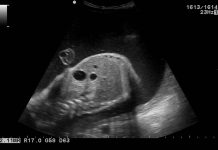It is through object permanence that your baby learns to understand the world around him/her. Let us consider this through an example, suppose you hide your baby’s toy below the pillow, your baby will look for the toy by lifting the pillow. Thus, your baby gets an idea that it is alright for things to disappear and in any case, he/she will get it back later. According to the children, if they can’t see something, it doesn’t exist which means that for instance, your baby will get frightened if you go into another room for some time. But with the help of object permanence, they will be able to learn that even if you disappear, you exist.
Read More:19 Effective Speech Therapy Activities for Kids
In this article:
When Does a Child Develop Object Permanence?
How Piaget Measured Object Permanence in Infants?
Object Permanence Games
Object Permanence Milestone: Stages & Its Importance for Babies
When Does a Child Develop Object Permanence?
We have listed below the stages of object permanence:
Reflexes (Birth to 1 Month)
Your baby explores the world around him through the reflexes in the neonatal stage. But during this time, your little one has absolutely no idea about object permanence. However, as he/she is exposed to visual stimuli, he may be able to detect movements.
Read More:39 Developmental Activities for Toddlers
Primary Circular Reaction (1 to 4 Months)
When it comes to familiar images, objects or activities, your baby will respond to them. Though only for a few seconds, your baby may as well keep looking at an object and then follow the same for some time.
Secondary Circular Reaction (4 to 8 Months)
During this stage, your baby understands about object permanence. He may begin to look for hidden things, not the completely hidden ones but the partial ones. However, he still has a lot to understand about object permanence.
Greater Sense of Exploration (8 to 12 Months)
During this time, your baby’s desire to look for things is more intentional. However, your baby may not be able to understand that he can still find the object if it’s hidden at a different place. Even though, it may not seem to be a major task, but it is a major cognitive development.
Read More:10 Interesting Games for Babies
Tertiary Circular Reaction (12 to 18 Months)
Your baby can now be able to find an object within his/her visual field, i.e. he/she will look for hidden things within his/her visual fields only and not beyond that.
Emergence of Object Permanence (18 to 24 Months)
Now your little one has a fair idea of what object permanence is, he/she will now be able to find the hidden objects and will also be able to imagine something that he/she cannot see.
How Piaget Measured Object Permanence in Infants?
According to Jean Piaget, a psychologist, cognitive development in babies is way more vast than it is considered and understood to be. Babies are constantly making efforts to understand new information and how to apply the same, as per Piaget’s theory. So, by making use of motor skills like vision, touch, taste and movement, babies understand a number of things going on around them.
In the early stages, babies only understand things they can see. But it is also vital for them to create a mental representation of objects so as to understand that even if they cannot see something, the object still exists.
Object Permanence Games
playing some fun games and activities with your little one is the best way to make your child understand the concept of object permanence. We have listed below a few games and activities that you can play with your baby:
Play, Leave and Return
We have also discussed a bit about this above. All you have to do is leave your little one with a caretaker or your partner and simply go to another room and then return in a while. This will teach your child that you are still there even if he cannot see you. If you want you can also call out your baby from another room.
Hide your Baby’s Favourite Toy
Take your baby’s favourite toy and hide it under the blanket and then, take it out after a while. If you want, leave a small part of the toy visible so that it’s a bit easier for your baby to find it out. You can also do this with a number of toys as your baby grows older.
Play Peek-A-Boo
This game is perfect if your baby is anywhere between 6 to 12 months as by this time, he is getting an idea of what object permanence is. You can hide behind the door or a curtain or even hide your face and then show again.
Conclusion
The best way to make your child understand anything is by simply spending some quality time with your child. and what can be more fun than games? But you have to keep in mind that not all babies are the same. while some may enjoy doing this, others may not be too supportive when it comes to your disappearance and they may panic over this. For better guidance, it is best to consult your doctor.
References
https://www.simplypsychology.org/Object-Permanence.html
https://www.simplypsychology.org/sensorimotor.html













